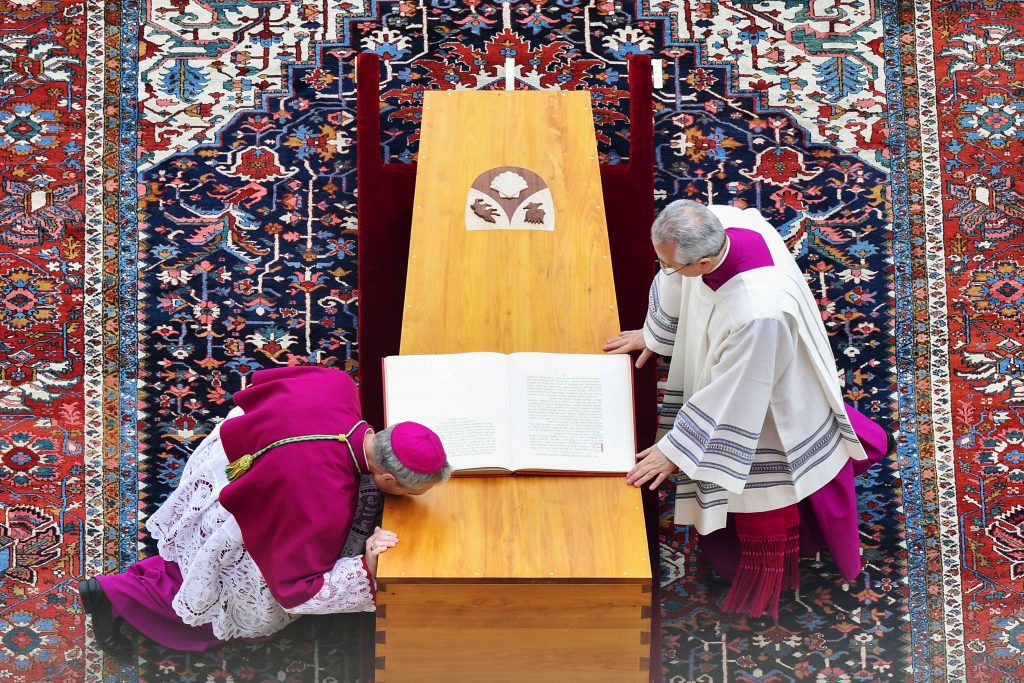ROME — New Year’s is a time for predictions, though generally they’re focused just on the year to come. Here’s one whose horizon isn’t the next 12 months, but, say, the next 100 years.
I hereby forecast that in a century’s time, the early 21st-century pope whose memory will loom largest won’t be either St. Pope John Paul II or Pope Francis, both wildly charismatic figures who dominated the global stage in their day. It instead will be Pope Benedict XVI, the awkward, bookish pontiff who, in his own time, just never seemed to turn the world on with his smile.
With both Pope John Paul and Pope Francis, the force of their personalities comes across best live, either in-person or on TV. As is often said of contextual humor, “you had to be there” to really get the impact.
Even now, it probably would be difficult for nonexperts to summon the titles of more than a couple of either pope’s writings — what people tend to remember instead are the grand gestures, the images, and the made-for-TV sound bites such as “Be not afraid!” and “Who am I to judge?”
Yet the nature of this sort of fame is that it has a very brief half-life; it starts to decay, in fact, the moment you’re no longer on-air. Just ask any American today under the age of 30 about Johnny Carson, for instance, and the uncomprehending stares you’re likely to get will speak volumes.
The written word, on the other hand, endures, and Cardinal Joseph Ratzinger/Pope Benedict XVI was preeminently a thinker and a writer. If you want to know either Pope John Paul or Pope Francis, you have to see them; to know Pope Benedict, on the other hand, you need to read him.

As a Vatican reporter, I can testify that one key difference between Pope John Paul II and Pope Benedict on the road was that with Pope John Paul, his speeches on trips were often a bit disjointed and hard to follow from beginning to end, but they always contained that money quote that would become the day’s headline. With Pope Benedict it was the opposite — A always led to B, and B led to C, etc., with crystalline clarity, though usually without that zinger of a sound bite.
To know Pope Benedict the best, you need to read his works prior to becoming pope as well as his output in office.
In 100 years’ time, it’s a good bet that several works by Cardinal Ratzinger/Pope Benedict still will be studied and dissected in seminaries, Catholic universities, think tanks, and publishing houses. Here’s a decidedly partial list — no more, really, than a sampler.
- “Introduction to Christianity” (1968): Essential reading for anyone seeking to understand the intellectual currents that shaped the Second Vatican Council (1962-65) and the period immediately following.
- “Eschatology: Death and Eternal Life” (1977): Cardinal Ratzinger once referred to this as “my most thorough work, and the one I labored over the most strenuously.”
- “The Spirit of the Liturgy” (1978): Liturgy was an “idée fixe” (“fixed idea”) for Cardinal Ratzinger/Pope Benedict over the entire scope of his life and career, and this volume presents his most developed views on the nature of Catholic worship.
- “Church, Ecumenism and Politics” (1987): Informed in part by debates over liberation theology, this is Cardinal Ratzinger’s most developed treatment of the folly of a “political” Christianity.
- “Deus Caritas Est” (2005): Pope Benedict’s first encyclical, and probably the most sustained reflection ever issued by a pope on the relationship between divinity and human erotic love.
- “Speeches in Regensburg, Germany, 2006; the Collège des Bernardins in Paris, 2008; Westminster Hall in London, 2010; and the Bundestag in Germany, 2011”: In these four discourses, Pope Benedict laid out a vision of the relationship between reason and faith and the role of religious faith in secular democracies. Going forward, no graduate seminary on secularity and religion likely ever will be held without at least considering these works.
To be honest, it’s difficult to assemble such a list of written works by any other modern pope that are likely to pass into posterity, especially works published before they even ascended to the Throne of Peter.
Arnold Toynbee, in his 1948 classic “Civilization on Trial,” put the historian’s perspective this way:
“The things that make good headlines are on the surface of the stream of life, and they distract us from the slower, impalpable, imponderable movements that work below the surface and penetrate to the depths. But it is really these deeper, slower movements that make history, and it is they that stand out huge in retrospect, when the sensational passing events have dwindled, in perspective, to their true proportions.”
In his time, Pope Benedict’s papacy was dominated by sensational events — Vatileaks, a furor over a Holocaust-denying traditional bishop, a surreal scandal involving fake police reports suggesting the Vatican had smeared a prominent Italian Catholic journalist, the explosion of the clerical sexual abuse scandals in Ireland and across Europe, and on and on.
Pope Benedict’s original, synthetic thinking on such key Catholic themes as worship, eschatology, and reason, while never destined to generate headlines, contributed to those “deeper, slower movements” that shape destiny, the perceived importance of which likely will only grow with the passage of time.
None of this is to suggest, of course, that either Pope John Paul or Pope Francis have been minor notes in history. On the contrary, Pope John Paul, among other things, was instrumental in the collapse of communism, while Pope Francis has revitalized the Church’s relevance in sectors of opinion where it has long faced either hostility or oblivion.
Yet if the true passport to immortality is print, then of the three pontiffs so far of the early 21st century, the one who seemed maligned and overlooked in his day may well be the one whose star shines brightest over time.

